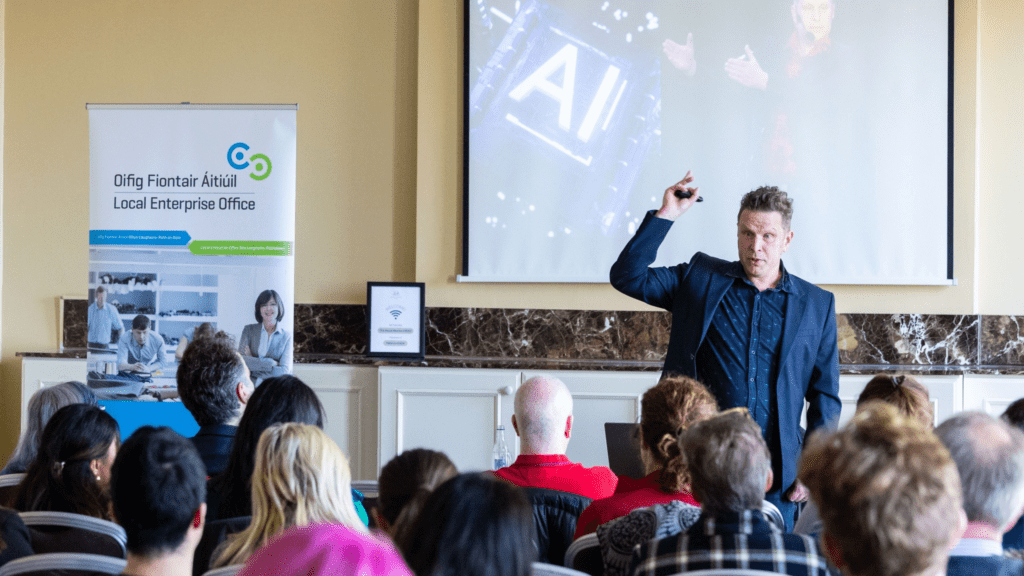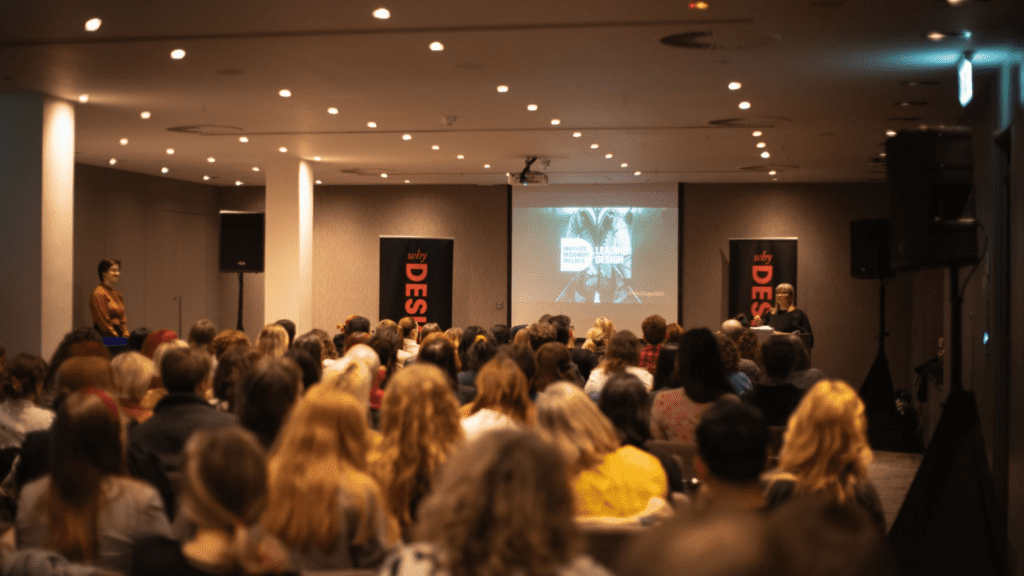Some of the Bradley crew attended the IDI FEED event, diving into the question of whether artificial intelligence (AI) is a friend or foe in the creative industry. Attendees grappled with a mix of excitement and apprehension, recognising the potential rewards, limitations, and the need for responsible AI integration.
TLDR below.
Some key takeaways:
Unlocking Potential: AI as a Catalyst for Creativity:
By enabling experimentation and fostering an iterative creative process, AI can empower designers to refine ideas and explore innovative solutions. AI presents an opportunity to augment, not replace, human creativity; acting as a valuable tool to inspire and enhance the creative workflow.
Navigating Limitations and the Call for Regulation:
Despite its potential, AI comes with limitations that warrant careful consideration. Robert Boyle, Head of Art/Creative Director for BBDO Dublin, expressed concerns around control, legal frameworks, and the emotional aspects of design. Participants and speakers stressed the need for responsible regulation to ensure ethical use. Striking the right balance between innovation and ethical considerations rests on the shoulders of both industry professionals using AI and the policymakers.
Closing the Gap: The 10% Challenge
John Moriarty, Dublin-based product designer at DataRobo, spoke about how AI can carry a creative project 90% of the way, but the remaining 10% is 90% of the human’s workload. The importance of human involvement in refining and fine-tuning AI-generated outputs cannot be overstated. Collaborative efforts between AI and human designers are crucial to transform concepts into compelling and resonant experiences.
Embracing the Unknown:
Kevin Kelly, founding executive editor of Wired magazine, captures the prevailing sentiment, “We are morphing so fast that our ability to invent new things outpaces the rate we can civilize them.” As we straddle the line between the information age and the intelligence age, we exist in a certain limbo of uncertainty. Approaching AI integration cautiously, with adaptability and a willingness to learn, will be instrumental in navigating the evolving landscape.
Addressing Bias:
A significant discussion at the event revolved around the biases inherent in AI algorithms and data. Recognising and mitigating biases in its outputs is crucial to ensure fair and inclusive outcomes. By actively addressing bias, designers can foster more equitable and unbiased creative solutions that resonate with diverse audiences.
Embracing Fresh Perspectives through “Good Mistakes”:
A lesser discussed idea, that of “good mistakes” made by AI, made a lasting impression. These mistakes disrupt conventional thinking, dismantling our logical dismissal of ideas that can close our judgement. By harnessing its ability to challenge assumptions, designers can unlock creative breakthroughs and discover innovative solutions that might have been overlooked. Embracing these serendipitous moments can lead to transformative and unexpected outcomes in the creative process.
The Promise of Personalisation:
AI’s current offerings provide generalised solutions for broader contexts. However, its true power will emerge when it becomes more localised, catering to specific needs and deeply enhancing the creative process. As technologies continue to evolve, designers can anticipate personalised and powerful AI tools that support their creative capabilities.
We’re Embracing a Thoughtful Approach:
When considering AI’s role in the creative industry, a thoughtful approach is paramount. Engaging in open dialogue, fostering critical thinking, and embracing responsible regulations are key to leveraging its potential while mitigating its risks. By combining the strengths of AI and human ingenuity, we can pave the way for a harmonious and innovative future in the creative industry.
At Bradley, we’re paying attention, we’re interested and we’re keeping an eye on what’s coming down the line. Events like this help to understand more and to stay up to date with industry professionals. Also, it allows us to engage in more discussion on the effects these new ways of thinking and creating can and will have on our work, now and into the future.
TLDR:
- AI in the creative industry can unlock potential by fostering new experimental and iterative processes.
- Limitations and the need for responsible regulation were discussed, emphasising control, legal frameworks, and ethical considerations.
- Human involvement is crucial in refining AI-generated outputs and collaborating with AI for compelling creative experiences.
- Approaching AI integration with caution, adaptability, and a willingness to learn is essential in navigating the evolving landscape.
- Addressing biases in AI algorithms and data is crucial for fair and inclusive creative solutions.
- “Good mistakes” made by AI can challenge assumptions and lead to innovative breakthroughs in the creative process.
- The promise of AI lies in its potential for personalised and localised solutions that deeply enhance the creative process.
- A thoughtful approach, including open dialogue, critical thinking, and responsible regulations, is necessary for leveraging AI’s potential in the creative industry while mitigating risks.



















